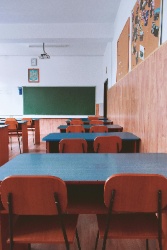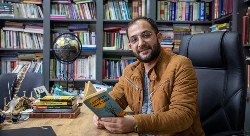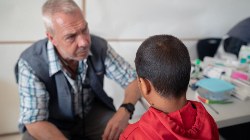Cablegate: Ecuador's White Goods Policies
This record is a partial extract of the original cable. The full text of the original cable is not available.
UNCLAS SECTION 01 OF 03 QUITO 000710
SIPDIS
DEPT PASS TO USTR BENNETT HARMAN
E.O. 12958: N/A
TAGS: ETRD EINV ECON EC
SUBJECT: ECUADOR'S WHITE GOODS POLICIES
REF: STATE 30500
1. Summary. In response to reftel, Emboffs met with newly
appointed Vice Minister of Industries in the Ministry of
Trade (MICIP) Jorge Illingworth and Ecuadorian Standards
Institute (INEN) Director General Felipe Urresta to discuss
white goods. Urresta had not, as he had offered to USTR,
presented his proposal to the Special Committee to suspend
the current practice that had prevented entry of certain
US-produced white goods into Ecuador. Though he had on two
occasions received copies of the US white paper on Ecuador
standards and our request to provide a written response, he
has not provided us with one. He did provide an oral
response and requested a meeting with USTR and Embassy
officials prior to the April 18-22 Lima round of FTA
negotiations. Though the GOE claims it complies with its WTO
commitments regarding technical trade barriers, its
interpretation of compliance leaves plenty of room for doubt.
End Summary.
White Paper Comments
--------------------
2. Commercial and Econ officers recently met with newly
appointed Vice Minister of Industries in the Ministry of
Foreign Trade (MICIP) Jorge Illingworth and President of the
Ecuadorian Standards Institute (INEN) Felipe Urresta to
discuss the USG white paper provided in reftel. Urresta
confirmed that he had received copies of the white paper from
USTR and the Embassy on two separate occasions. He had not
provided a copy of the white paper to the &Special
Committee8 referred to by Urresta and the white paper, which
is the Comite Interinstitucional de Normalizacion, or
Inter-institutional Standards Committee (CIN by its Spanish
initials), but said he had discussed the salient points of
the white paper with CIN.
3. Illingworth and Urresta said that the trade statistics
they reviewed (from manifestos.com) do not indicate a
significant drop in US white goods entering Ecuador. They
said instead that the statistics indicated imports of white
goods from other countries (especially Brazil, Italy and
Colombia) were growing more rapidly than imports from the
USA. Urresta also asserted that there is nothing new in
Ecuador,s procedures regarding white goods, claiming that
the GOE is simply implementing its 1998 standards law.
4. According to Urresta, neither the INEN nor MICIP have ever
rejected Underwriter Laboratories (UL) certifications.
Urresta also claims that the GOE need not, under the WTO
Technical Barriers to Trade Agreement, notify the WTO if the
GOE is applying internationally recognized standards and
processes, as is the case with white goods. He denied that
the GOE was requiring new INEN-1 compliance certificates for
superficial changes to white goods (e.g., new colors).
Urresta Takes No Action on His Offer to USTR
--------------------------------------------
5. Urresta had also not discussed with CIN the offer that he
had made to USTR,s Suzanne Troje last October. We again
reviewed the content of that offer for Illingworth,s
benefit. First, INEN would repeal the regulations and
instructivos (described by Urresta as mandatory instructions
designed to eliminate discretion when implementing
regulations) that have prevented some US white goods from
entering Ecuador. Second, the GOE would issue a formal
notification of new regulations with a 90-day period to
receive comments on the proposed regulations. Third, the GOE
would arrange a transparent review of the comments received
in response to the notice. Finally, the GOE would publish
the new regulation, allowing six months for implementation
before it took full effect. Urresta said he was willing to
bring the proposal to CIN, but later offered an alternative
to unblock the entry of US-made refrigerator freezers. He
said the CIN could approve a modification to the regulations
that would allow US origin refrigerators and freezers to
enter Ecuador upon presentation of a UL 250 compliance
certificate, a certificate of &tropicalization8, and a
certification that the equipment does not use CFCs. Urresta
suggested that USTR and Embassy officials meet in Quito prior
to the April 14-18 Lima FTA negotiations round.
Organizational Structure
------------------------
6. The CIN and various technical committees are the principal
bodies involved in standards and compliance policy.
Established in 1998 by Executive Decree 1536, the CIN is
responsible for publishing the list of goods that must comply
with Ecuadorian norms and technical registrations. The
CIN,s duties include adding or removing products from the
list of those that must comply with Ecuadorian regulations,
recommending guidelines for the correct application of this
law, recommending processes to harmonize national standards
with international ones, and any other activity related to
the contents of this decree.
7. The CIN published the first list of products subject to
norms and technical regulations in 1999, with subsequent
modifications in 2000, 2002 and 2003. In January 2003, by
Executive Decree 3497, the GOE introduced the INEN-1
certificate, which certifies that a product complies with
Ecuadorian technical regulations. The INEN-1 is valid for
one year. The list of products was last modified in August
2003 by Acuerdo Interministerial 03420 (Registro Oficial 158)
to include new types of gas ranges and refrigerators.
8. Executive Decree 3497 also defined who would serve on the
CIN: the vice ministers of Industry and Foreign Trade of
MICIP, one representative each from the chambers of commerce,
industries and small industries and the Director General of
INEN (currently Urresta). The latter is not a voting member
of CIN, but in effect runs CIN agendas and meetings. INEN
provides technical assistance to the CIN and the technical
committees. Embassy sources indicate that INEN (through
Urresta) manages and leads much of the standards work,
leaving the CIN to rely upon INEN,s technical expertise.
9. The technical committees are responsible for formulating
new regulations, revising old ones and drafting instructivos.
The instructivos, described above, also include information
essential to a company wishing to import regulated products.
However, Urresta asserts that the TBT agreement does not
require publication of instructivos or public notices of
changes in the instructivos. Nor are the instructivos
published on the INEN website. They are also not published
in the official register but take effect immediately upon
adoption. Urresta claims that there is no need to notify the
public of instructivos because they do not change laws or
regulations, but merely implement them.
Current Process
---------------
10. MICIP (at the behest of INEN) initiates a new regulation
or regulatory change when the INEN sends emails to specific
stakeholders, reportedly by sending them to various chambers
of industry, informing them of a proposed regulatory change.
INEN does send out an electronic bulletin every three
months, but it covers activities that occurred in the prior
quarter. October 2004 was the last electronic bulletin
posted on the INEN website. Though the website has links for
additional information on numerous standards issues, there is
no link for technical regulation notifications.
11. MICIP (again through INEN) convenes technical committees
on specific topics. According to Urresta, one must be
&technically qualified8 to participate in these meetings.
For example, in one case, invitations were sent to 27
individuals from local industry, chambers of commerce and
industry, universities and other government officials. A
technical committee was formed with 11 voting members, 1
representing a foreign manufacturer, 7 representing local
manufacturers and their suppliers, and 1 each from a
technical university, the college of mechanical engineers and
MICIP. Interested parties may send comments to the technical
committee, but the committee itself decides which comments
are worthy of consideration. INEN representatives serve as
the secretariat for the technical committees, producing draft
language for review and discussion by the committees.
Urresta resisted our suggestion to open the technical
committee meetings to the public.
12. After six-eight months, the technical committee submits
the to INEN,s Board of Directors (the Consejo Directivo, or
CD). The CD reviews the draft and generally forwards it to
the CIN, who in turn passes it to the Minister of MICIP for
approval. On those occasions when the CD suggests changes to
the draft, it is returned to the technical committee to be
modified and is then re-submitted to the CD. The CD sends
the vetted draft through the CIN to the Minister, who signs
the new regulation.
13. The GOE modified its notifications procedures in 2004.
Once a regulation is adopted, the regulation is published in
the official register and reported to the WTO by the MICIP
&inquiry point of contact.8 The WTO notification includes
the address, phone number, fax and e-mail of the inquiry
point of contact, but not the incumbent,s name (currently
Arturo Barbosa of MICIP). The WTO notice does not provide
direct access to new regulations or other related documents.
14. Urresta said that under the WTO TBT Agreement Ecuador was
not required to state in its WTO notices where a new
regulation could be obtained. Providing a point of contact
for further inquiries was sufficient, he asserted. He also
said that only comments from other governments (not private
companies or individuals) would be accepted by the GOE during
the 60-day WTO comment period. (Note: Andean Community
countries (CAN) ) Bolivia, Colombia, Ecuador, Peru and
Venezuela ) by agreement have 90 days under a CAN
agreement.) Also, Urresta claims that Ecuador is not
required under the WTO TBT Agreement to notify or publish
regulations that are applying internationally recognized
standards or procedures, which he cites is the case with
white goods.
Proposed Quality Law
--------------------
15. Illingworth told us that Ecuador does have a proposal for
a new quality law that he helped to draft when he was Vice
President of the Guayaquil Chamber of Industries. However,
given the turmoil in the Ecuadorian Congress (a near
permanent condition, made worse over the last several
months), the new law will not be proposed to Congress in the
immediate future. (Comment: We believe it unlikely that any
serious structural reforms can be passed during the remainder
of President Gutierrez,s term in office, which expires in
January 2007. End comment.) Urresta touts a 1999 World Bank
project designed in part to restructure Ecuador,s standards,
testing and compliance agencies. However, the World Bank,
for lack of GOE progress, withdrew the funding.
Comment
-------
16. What is clear from our review of the Ecuadorian standards
policy and compliance mechanisms is that INEN controls most
of the process. The lack of notification to and
participation by the public means that INEN can operate as
the &technical expert8 with little to no checks and
balances, leaving considerable room for special interest
interference. Even the technical committees are stacked in
favor of local producers, thereby suggesting legitimacy to
protectionist policies. INEN has said that the WTO requires
all previous obligatory Ecuadorian technical standards to
become voluntary within three years. Therefore, Ecuador will
likely move to rewrite its technical standards as technical
regulations. In February, for the first time, Ecuador
notified two new technical regulations.
KENNEY


 Save The Children: Heat-stricken Bangladesh Extends School Closures
Save The Children: Heat-stricken Bangladesh Extends School Closures Hayden Stephens and Associates: Record Class Action Settlement Gives Hope To 50,000 Australian Junior Doctors
Hayden Stephens and Associates: Record Class Action Settlement Gives Hope To 50,000 Australian Junior Doctors UN News: Healing Page By Page In Earthquake-affected Türkiye
UN News: Healing Page By Page In Earthquake-affected Türkiye Save The Children: Rate Of Attacks On Healthcare in Gaza Higher Than In Any Other Conflict Since 2018
Save The Children: Rate Of Attacks On Healthcare in Gaza Higher Than In Any Other Conflict Since 2018 UN News: Green Light For New Cholera Vaccine, Ukraine Attacks Condemned, Action Against Racism
UN News: Green Light For New Cholera Vaccine, Ukraine Attacks Condemned, Action Against Racism Laureus: Grand Slam Champion Garbiñe Muguruza Announces Retirement Ahead Of Laureus World Sports Awards
Laureus: Grand Slam Champion Garbiñe Muguruza Announces Retirement Ahead Of Laureus World Sports Awards